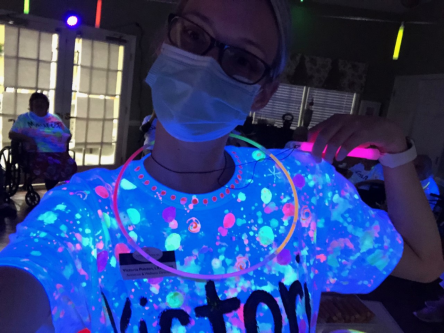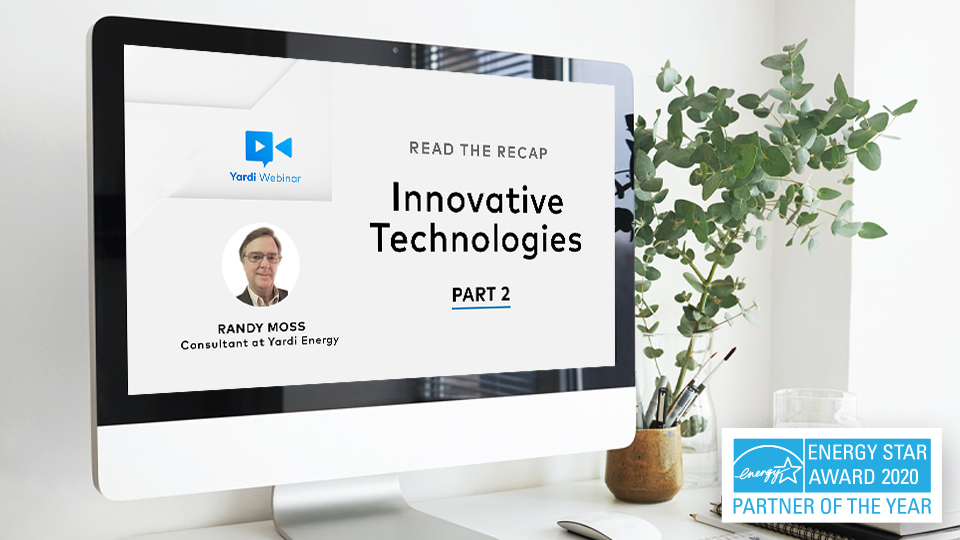Yardi announced today the acquisition of CommissionTrac, an Atlanta-based software company that provides revenue management software for commercial real estate companies, with a focus on commercial brokerages. Founded in 2015, CommissionTrac’s software is used by small and large brokerages to manage workflows, from tracking deal pipeline to invoicing clients to paying out commissions to individual brokers. The CommissionTrac team will continue to support their existing clients, while also integrating the platform into Yardi’s CommercialEdge suite. CommercialEdge is a recent addition to Yardi’s suite of products, focused on commercial brokers’ needs. “At CommissionTrac, we’ve spent years developing a product to streamline the operations of a brokerage, while also providing greater visibility to brokers about their commissions,” said Turner Levison, cofounder and CEO of CommissionTrac. “By joining Yardi’s CommercialEdge division, we are excited to accelerate our impact in the commercial real estate space.” “We’re very pleased to welcome the CommissionTrac team to the Yardi family,” said Arjun Rao, senior director of global solutions at Yardi. “The team has built a strong product that perfectly complements our CommercialEdge suite, especially our marketing and deal management products. We are excited to work together to continue to add value to the commercial real estate space.” CommercialEdge, powered by Yardi, consists of marketing and deal management products, as well as a flagship research product that provides extensive property, listing, transaction, ownership and debt information across all commercial real estate asset types. Clients can use the platform to uncover vital market data and insights, market their own listings, and manage deals to execution. About CommissionTrac CommissionTrac was founded on the belief that managing a commercial real estate brokerage should be easier. Our mission is to allow a brokerage of any size to have the tools they need to organize everything from...
Senior Living Wisdom
Facts and figures
Fifteen percent of Americans were 65 and older as of 2018. One study projects that the population of Americans 65 or older could reach 108 million in 2050. The 85-and-older population may increase at least fivefold in that time, to more than 6% percent of the citizenry. Some indicators of an aging population — and a few fun facts — are presented in the information below, which is drawn from a range of sources including the U.S. Census Bureau; the United Nations; Washington, D.C.-based population, health and environmental information source Population Reference Bureau; and Virginia law firm Mountain Empire Legal Services. 85 and up is the U.S.’s fastest-growing age group by percentage. By 2040, about one in five Americans will be 65 or older, up from about one in eight in 2000. Persons 65 and older are projected to outnumber children by 2034 for the first time in U.S. history. In 1960, those 65 and older comprised 4.9% of the global population. By 2050, they will account for 17%. More than 10,000 members of the baby boom generation (born between 1946 and 1964) turn 65 every day. As of 2018, 24% of men and about 16% of women 65 and older were in the labor force. About 65% of baby boomers say they plan to work past age 65. Five percent of people 65 and older in 1965 had completed at least a bachelor’s degree. Twenty-nine percent of that age group had done so by 2018. About 80% of seniors own a car and drive frequently. Nearly half of all adults 65 and older volunteer. Harland David Sanders (Col. Sanders) started Kentucky Fried Chicken when he was 65. May is Older Americans Month, so designated to appreciate and recognize senior citizens. August 21 is...
IMN Annual Forum
Tech Advances, Reporting, Transparency
As part of the 2020 IMN Real Estate Private Equity Funds Virtual Forum, Yardi had the unique opportunity to participate in several panel discussions and share thoughts on trends in technology and investment management. In one session, “Meeting the Challenges of Fund Administration, Investor Reporting & Transparency,” Scott Tavolacci, Yardi regional director of global solutions, moderated the conversation. As Tavolacci noted, it seems that roughly 10 years ago the hedge fund space and the private equity space expanded into fund administrators and real estate may have been a bit behind. However, recently the real estate sector has picked up speed in this sense, and as Jeff Bush said, over the last five years, he’s seen a lot of real estate managers and firms thinking about and questioning fund raising and outsourcing practices every time they find a deal. Bush, president of Standish Real Estate Services Group, believes that the real estate industry is often taking the approach of seeing what works best in other sectors, mitigating risk or mistakes potentially along the way. Technology has played a major role in all aspects of fund administration as it does for just about all walks of business. Usage has only increased with the mass exodus away from the traditional office during the pandemic. The ability to use portals to access information in real time and make transactions on the go is vital, for anyone from investors to fund administrators. Beyond that, it’s important to have a connected solution that brings together all office functionality from accounting in the back office to investor relations with front office management. Real estate traditionally lagged behind in terms of tech usage, but the pandemic has expedited tech adoption while still keeping the focus on the value of data. Platforms are providing more secure and reliable ways to access and relay data between entities without any time-consuming or error-prone manual effort to aggregate data from disparate sources. In “Using Technology to Improve Efficiency & Returns,” Chris Barbier, Yardi industry principal for investment management, explained that while advanced tech has become a prominent focus for the industry, it was the more basic requirements that were in high demand earlier during the pandemic. “Starting with payables, people were going into the office, picking up the check printer and bringing it home with them. You would think some of these payables processes would be pretty basic, but as the workforce went remote, we saw this was an area of need to adopt some technologies,” Barbier said. Departments such as accounts receivables also saw a major uptick in tech usage. A large part of this was due to the volume of people who need visibility to data and reports, from accountants to property managers to CFOs to portfolio managers. Without basic data sharing and connectivity between departments, remote work would not have been nearly as successful as it has been this year. There was initially a significant level of uncertainty surrounding workforces transitioning to work from home environments, as both panel discussions touched on. Several panelists noted, however, that fears of lack of productivity hardly materialized, as companies adopted tech at higher rates than ever before and employees proved that remote work is feasible long term. On the investor side, the importance of communication has been highlighted throughout the year. “Investors want to know quickly what is going on with their portfolio and investments, so we’re seeing an uptick in tech adoption for better communication with investors to provide them information they’re looking for,” Barbier added. “It’s really interesting to see how investors are doing due diligence virtually, where a lot of that really wasn’t happening before,” said Barbara Rea, founder of Rea Advisory Group. Traditionally, investors expected to come in and meet in person, build some trust and forge a stronger relationship. With that being taken away this year, lenders and investors are relying on technology such as virtual meetings, a rare...
Aegis Living’s Leader...
IDs Keys to Longevity
Editor’s note: The author is founder and CEO of Bellevue, Wash.-based Aegis Living, a national leader in senior assisted living and memory care that operates 32 communities in Washington, California and Nevada and has seven other communities in development. Interacting with our seniors at Aegis Living has taught me so much—not just about life and living, but also about how to live a long and happy life. One of the things I’ve learned from our “oracles”—which has been confirmed by research—is that having purpose in your life is critical to your health and longevity. I think of purpose as putting forth effort toward doing things that have meaning for you and having daily, doable micro-goals. For example, if gardening has become a passion for you, giving it a sense of purpose in your life would lead you to read gardening books, talk to neighbors about what they’re planting and share ideas and tips, speak to experts at nurseries, and move things around in your yard to improve and enhance their health and visual impact. A sense of purpose organizes your time, focus, and even relationships. People who have goals and work toward them also feel a sense of self-worth and fulfillment, which helps them maintain a positive outlook on life. I believe that finding a renewed sense of purpose is what takes people into thriving later in life. If you are bored with cooking after many years of doing it, find a new cooking style—or a completely new hobby or pursuit that excites you. Dedicating physical and mental effort Hidekichi Miyazaki, a Japanese father of four and grandfather of 10, was 105 years old in 2015 when he completed the 100-meter sprint in 42.22 seconds. He set a new Guinness world record in track and field as...
IM Insights
Shared by Yardi clients
Yardi’s November Executive Briefing brought together a collection of industry leaders to discuss current trends and solutions to mitigate a year of unique challenges. As part of the session, Yardi senior vice president of global solutions, Rob Teel, provided an update on some of Yardi’s current initiatives and what trends are driving Yardi’s efforts moving forward. The company is underwriting a major tenant survey with BOMA which received over 3,000 responses. The survey responses will be revealed in the coming weeks and there will be upcoming webinars with BOMA to review and analyze the findings, such as the likelihood for commercial tenants to renew, factors driving their renewal decisions and factors driving office occupancy levels. Teel noted that some of the prevalent industry trends this year are topics he’s rarely had to deal with, such as concern over rent deferrals and concessions. Yardi’s response was to create a new product called Lease Manager, which helps landlords better manage tenant risk and overall portfolio health. In addition, with a focus on removing touchpoints, Yardi felt it was key to help clients eliminate paper from their day-to-day operations. To do so, there was a corporate initiative to promote products such as VendorCafe and CommercialCafe, which make it easy to electronically submit payments, vendor invoices, tenant invoices and any other documents which normally would have required mailing or submitting paperwork. The industrial, retail and office sectors have all been affected differently by the global pandemic. Industrial has become the “shining area of commercial,” Teel noted, thanks to a large spike in e-commerce growth and demand staying steady along with occupancy and rent. On the flip side, retail has naturally seen more challenges with less foot traffic, shutdowns varying by jurisdiction and higher vacancy rates. This has led...
Status of Storage
Yardi Matrix report
Confidence in self storage remains high as the sector demonstrates ongoing strong street rate performance despite COVID-19’s continued impact across the U.S., reports the latest Yardi Matrix National Self Storage Monthly report. National street rates for standard 10×10 non-climate-controlled (NON CC) units increased 1.7% last month compared to November 2019. While year-over-year street rates nationwide for 10×10 climate-controlled (CC) units did not increase, the flat performance reflects an improvement over the first nine months of 2020. From October to November, national street rates for 10×10 NON CC units also saw an increase of 0.9%, while nationwide rates for similar-size CC units remained unchanged. Annual street rate performance was negative in only about 19% of the top markets tracked by Yardi Matrix for 10×10 NON CC units in November. Rates for this unit type were hit the hardest in Minneapolis, which saw a 3.5% decrease year-over-year. Experts caution that despite several months of rosy reports, there still could be challenges ahead. “While self storage has established itself as a strong performer in difficult market conditions, it could face a tough slog ahead as another round of COVID-related lockdowns and restrictions emerges this winter,” states the report. Nationwide, Yardi Matrix tracks a total of 2,136 self storage properties in various stages of development—comprising 590 under construction, 1,134 planned and 412 prospective properties. The national new-supply pipeline as a percent of existing inventory increased by a minor 0.1% month-over-month in November, and the share of existing properties in various stages of development accounts for 8.3% of existing inventory. Yardi Matrix also maintains operational profiles for 26,351 completed self storage facilities across the United States, bringing the total data set to 28,487. Read all the highlights for self storage in the latest National Self Storage Monthly...
Working from Home
When to update policies
In 2017, only 5.2% of Americans consistently worked from home. This summer, more than 51% of employed Americans transitioned to remote work environments. This means more time, tasks and responsibilities at home– and necessary updates to their renters insurance policies. Not sure if you need to update your policy? Check out the scenarios below to see if they apply to you. You have more frequent guests than usual Suzanne and her partner, Dave, are a blacksmiths who recently had to close their shop in the city. They hauled their equipment to the garage of Suzanne’s rental. The space is cramped and darker than they’re accustomed to, but things are working fine. Should Suzanne review her liability insurance policy? Yes! Her current liability coverage may be sufficient to cover most incidents in her rental house. Her coworker, however, will be in her rental more often than usual. The increased frequency of his visits along with using high-risk equipment in a less-than-ideal space may call for additional coverage. You have significantly more equipment or materials than usual Leanne is a professional bridesmaid. (Yes, they exist.) With limited access hours at her storage facility, she may have tens of thousands of dollars of wedding supplies or specialized equipment at her rental. Should Leanne review her personal property coverage? Yes! This is tricky, because while she did not pay for the items, they are her responsibility while in the unit. The cost of the items may exceed her typical renters insurance cost, warranting a policy update. Additionally, she will need to consider an actual cash value protection policy rather than replacement cost coverage. Actual cash value plans offer coverage up to items’ current market value. In contrast, replacement coverage replaces compromised items. This time-consuming process may be less...
Looking Ahead in Senior Living...
Q&A with Richard Nix
How have sales teams adjusted to reduced face-to-face consultations during the pandemic? How do clients stay connected with leads? What product offerings will Yardi focus on in 2021? Richard Nix, senior director of senior living sales for Yardi, covers these topics and more. Below are excerpts from an interview that was published in Senior Housing News. Q.: You’ve spent your career in technology with a lot of time in the senior space and you’ve been with Yardi since 2014. What lessons do you draw from most frequently in your current role? A.: The main lesson is to always talk to people. A lot of folks like to communicate using technology, such as emails and text, but there’s nothing like getting on the phone with people and really learning their issues— especially now that we’re not seeing them at client meetings and at conferences — and to see what is really driving them and what issues are pertaining to them right now. The other key point is teamwork. The Yardi culture is all about teamwork. We have a great team, and we work to solve problems together for our clients. Q.: One of the early outcomes of the pandemic was the increase in technology adoption, including among sales and marketing teams. What are the most important ways that you’re seeing technology augment the diminished in-person sales calls in 2020? A: Salespeople depend on technology for handling many client requests. Since face-to-face meetings have been hard to arrange during the pandemic, continual contact with clients by other means became critical. In terms of specific technologies, the use of the video meetings has been a shift. This is a personal thing, but I like to put the camera on myself at the beginning of a video call....
Social Seniors
Thriving with HH Hunt
Have you ever heard the saying that attitude is everything? How we choose to respond to a situation impacts our outlook, our possibilities and the responses of those around us. During tough times, one young woman in Raleigh constantly recommits to her positive attitude. Her decision to do so has positively impacted the entire community. Meet Victoria Meet Victoria Polston, activity and wellness director at Spring Arbor of Raleigh, an HH Hunt Senior Living community. Victoria is like many employees in assisted living communities: compassionate, patient and heavily caffeinated. She also exemplifies personality traits that have become indispensable during the pandemic: creativity, grit and optimism. As cities issued quarantine mandates in the spring, Polston faced a community of seniors who were more isolated from their loved ones than ever before. Excursions and visitors were no longer an option. Some seniors couldn’t understand the severity of the pandemic or their vulnerability. They were hurt, depressed and confused that their loved ones were no longer coming to visit. Polston got creative with engaging activities for her residents. “My goal is to make the lives of residents fun, active and worth living,” says Polston. “When I do something, I like to go all out.” Fun for every season In the warmer months, Polston offered seniors hula dancing and a luau, fake tattoos, a Mardi Gras party and a butterfly exhibit. She even coordinated a farmer’s market on the premises to replace an excursion that residents missed. As the weather cooled down, the activities continued indoors. Seniors made gourmet truffles, and danced during a neon glow stick party. They customized their shirts with glow-in-the-dark paint and donned glowing necklaces and bracelets. “I filled our activity room with black lights and all my residents were so excited when they...
New Features
In the Senior Living Suite
Yardi continuously strives to make its property management software more valuable to operators of senior living communities. As new features are incorporated into the Yardi Senior Living Suite, the upgrades are documented, compiled into manuals and made available to clients. Recent upgrades and plug-ins include: Yardi Voyager Senior Housing: You can track monthly fee deferral requests, recovery schedules and generate payment plan agreements for signature with the Deferral Plan functionality. Community Analytics and Senior Financial Analytics reports are easier to use. Watch the video overview Yardi Senior CRM: Check out an enhanced user interface that includes a new dashboard with optimized graphical reporting, several new KPIs and goal tracking, and a redesigned prospect profile that includes a new activity feed view and streamlined navigation among prospects. We also added specific approver roles to the leasing workflow and a new Past Due Activities report that provides real-time data on overdue activities. Watch the video overview Yardi EHR and Yardi eMAR: EHR: Service plans can now be signed digitally. The Clinical Move-In workflow lets clinical teams move residents into EHR without impacting the financial Move-In process. There’s also a new Shower/Laundry/Housekeeping Schedule report that covers seven days of upcoming tasks. eMAR: Quantity tracking is enhanced, as is the ability to perform blind counts of controlled substances and identify discrepancies. You can set up the Order Change report to run nightly and send automatically to the pharmacy in a password-protected email attachment. Watch the video overview You can also join a webinar to gain even more insight into our comprehensive solution for senior living...
Model of Adjustment
QuadReal and Yardi Elevate
While the industrial sector shows strong occupancy and rent performances, office and retail face a host of challenges including deferrals, concessions, spiraling vacancy rates and, of course, the ongoing COVID-19 pandemic. How can commercial real estate companies not just adjust, but thrive in today’s environment? A recent Executive Briefing hosted by Yardi, invited Tom Sheraden, chief technology officer for the QuadReal Property Group, one of Canada’s largest asset managers, to describe how his team used advanced property management software to successfully adapt to the rapidly changing environment. A major advantage for QuadReal was a company culture that embraces not just accepting change but owning it. “Our workforce embodies a deep personal drive to make things work better and to own change, not just accept it,” Sheraden said. A versatile technology platform capable of handling the breadth of QuadReal’s real estate activities also helped make the global real estate investor, operator and developer fully equipped to press ahead with major projects. Through Yardi Elevate, QuadReal can manage the deal pipeline, visualize portfolio health, easily view space availability, analyze risk, complete accurate budgeting and manage construction projects from a single connected solution. “A lot of companies would have taken their foot off the gas. But thanks to our culture of accepting changing technology, we were able to spend our time on forward-looking opportunities versus just surviving,” noted Sheraden, who also paid tribute to staff members whose duties required them to remain onsite throughout the pandemic. Prior to adopting its asset management system, for example, obtaining full operational and financial data typically required a separate business intelligence platform. But Yardi helped QuadReal shift that responsibility to the people with the deepest knowledge of the business. “Our strategy is to empower those analysts with great data, great tools...
Tips for Hosting + Staging
Virtual + Self-Guided Tours
If you thought that virtual tours and self-guided tours were flashes in the pan, think again. Renters throughout the U.S. are speaking up about their tour preferences. Non-agent-lead tours are ideal for more than 52% of renters, reports a survey by RentCafe.com. That same report reveals that more than 83% of renters would take a self-guided tour. Though social distancing is a factor for some, 63% of renters would do so because they want to tour at their own time and pace. Additionally, more than 70% of renters would rent an apartment without seeing it in person if they could explore it via virtual tour. Virtual and self-guided tours offer convenience as well as safety. Since convenience is always trending, these tour types are here to stay! Check out the pro tips below to host effective virtual and self-guided tours. Special camera considerations for virtual tours Property photographer Deanna Campana of Welcome Home encourages agents to conduct tours in landscape mode (horizonal) rather than portrait (vertical). “The latter will make all your spaces seem narrow and cramped,” she explains. Campana notes that time of day is also important. During a conventional tour, you may choose to tour midday, open all the blinds and let the natural light cascade into the room. When walking from space to space during a virtual tour, however, this will cause your camera to fade between very dim and bleached-out spaces. The results are a tour that’s challenging to see, much less enjoy. “Midday light is too harsh,” warns Campana. “Consider scheduling most video tours in the early morning or evening light. Cloudy days are ideal so you can shoot at any time.” She adds, “If you must tour midday, close the blinds. The outdoors will be overexposed, too bright for renters to see what’s out there, anyway. It’s better to focus on what’s inside.” She advises treating the view from each room as its own feature when necessary. Go outside when you can. If not, approach the window, open the blinds, and close them once done. When light distortion is unavoidable, schedule in the evenings during “golden hour” when the light is “soft, magical and with a golden glow.” “Many phones will allow you to snap pictures while recording,” says Campana. “Take pictures of things the renter likes. You can include them in your follow-up email.” Live vs. pre-recorded tours Pre-recorded tours are a great option. About 27% of renters said they would prefer to see prerecorded videos of units over live virtual tours, reports Adobo listing site. Once posted, pre-recorded unit tours are available 24/7 on your website, which saves time for staff. A videographer or component agent can pick the ideal time of day for the best lighting and noise control. Image stabilization tools create a beautiful, smooth tour and less hassle for staff. For agents taking on the challenge, Campana adds, “For pre-recorded tours, shoot the video at night using ambient light. It’s uniform, flattering and won’t cause troublesome light imbalances.” Since pre-recorded tours require editing, they may not be ideal for hot markets where units are listed and leased in a matter of hours. Other considerations for pre-recorded and live virtual tours Pace matters. Walking too quickly through a unit will cause renters to feel rushed and possibly dizzy and disoriented. “Walk slower than you think you need to, like you’re walking with a senior,” smiles Genitra Maxwell, assistant manager at Bridges of Kennesaw apartment community. “And just check in and ask if the pace is okay.” Leasing agents may be accustomed to narrating conventional tours. Too much talking may seem distracting to some. “Just ask them what they prefer,” advises Maxwell. “Some may want a narrated walkthrough and then silence during the second pass where they can ask questions.” Maxwell encourages agents to home in on details that renters won’t see a camera phone. “Any technology in the unit,...
Smart Sustainability
LBA Reality and Yardi Pulse
Full-service real estate company LBA Realty is continuing its portfolio-wide partnership with Yardi Pulse® as the company implements a Smart Building Program to enhance their sustainability strategy. LBA and Yardi® conducted an initial proof of concept pilot at a single property. In January 2019, LBA Realty adopted a phased approach to roll out Meter Insights and Fault Detection to eleven office properties in four different states. Leveraging pulse modular capability, these initial solutions provide real-time electrical meter monitoring and analytics, as well as HVAC fault detection and diagnostics. This allows the LBA engineering team and Yardi’s consulting services to identify hidden performance issues including extended run time, overlap in HVAC mode conditions and an inefficient sequence of operations. LBA now receives timely and accurate energy use data for 5.9M square feet of their office properties. Year-to-date, the program has resulted in energy use reduction of 16.2M kWh, which equates to savings at $0.32 per square foot. After gathering quantifiable results, LBA is now entering the second phase of implementation, Pulse Building Optimization. “With Pulse Building Optimization representing our artificial intelligence software, we look forward to realizing our vision of bringing intelligent buildings to life,” said Perry Schonfeld, principal and chief operating officer of LBA. “It is exciting to see the progress LBA Realty has made with a phased approach to implementation and the value of their incremental steps. We foresee continued success of LBA’s energy platform and growth of the Yardi-LBA partnership,” said Akshai Rao, vice president at Yardi. Download a brochure to learn more about the Yardi Pulse...
Realcomm | IBcon
CRE changes coming
Due to unique challenges this year, the 2020 Realcomm | IBcon Conference changed to a new hybrid format with two days of virtual sessions followed by a day of in-person sessions. As part of the virtual event, Yardi president and founder Anant Yardi participated in the opening session panel, as well as a thought leadership discussion with other industry software providers. Mr. Yardi’s vision for the future of the commercial real estate industry was optimistic, while stating the importance of businesses adapting to a new normal. In the opening session, “#COVID.RE.Economy.Technology.NewNormal,” he reflected on the difference between gathering 2,500 people in one venue at the last Realcomm conference in June 2019, versus a virtual environment over two full days of content in October 2020. “I yearn for those times when we were able to be face to face,” he stated. “But we understand change, we recalibrate and navigate that change.” Property owners and managers are likely to have some concern over whether tenants will need their space at the end of the lease, but enterprise corporations such as Microsoft and Exxon are leading the way on hybrid work models, which may be the new normal. Workers could access the office at some points during the week for team collaboration and then continue to function normally from remote environments, be it at home or a shared coworking location. For those companies seeking more space, often satellite offices, Mr. Yardi sees a trend where clients search available sublease space or sections of coworking offices to bring workers back into a collaborative environment. A significant challenge for the future of the office sector is occupancy levels. While a majority of tenants have managed to successfully pay rent and offices are slowly beginning to reopen, capacity restrictions and...
PM EXPO Highlights
Navigate Change with Confidence
Yardi returned as a proud sponsor of The Buildings Week PM EXPO 2020. Nearly 6,000 design, construction and real estate experts attended the virtual event which offered engaging content and targeted networking opportunities. One of the conference’s hottest sessions focused on using technology to overcome hurdles posed by COVID-19. In “Pandemic Proofing Canadian Real Estate through Technology and Innovation,” three industry leaders conveyed how technology helped them weather seasons of unprecedented change. Heather Brady, national director of sales at Yardi Canada Ltd. moderated a panel consisting of Maria Aiello, global head of private markets and real estate technology, MVP at Manulife Financial; Moe Ladha, finance transformation lead at The Cadillac Fairview Corporation Limited and Todd Nishimura, senior director of marketing, leasing and communications at GWL Realty Advisors Inc. To remain nimble and responsive, each panelist acknowledged the importance of leadership, digital communication and accessibility to data. Tech for leading with purpose Aiello proposes that during tough times, leadership must set the tone for adaptability, receptivity and a meaningful change. She says, “Manulife has been nothing but impressive with focusing on humanity by showing we are here to help. Our values and culture have extended to a different tier, and initially it was in response to the mental health of our employees and customers.” The three organizations found creative ways to virtually demonstrate empathy. Dynamic resident portals and websites were a critical resource for staff and residents. Sites focused on best practices for mental and physical health. Nishimura explains, “Mental health has become a real focus and part of the stakeholder approach. We created a COVID repository with trusted resources. The site was successful because we promoted it via email and building signage.” Digital tools for communication and transparency Virtual leasing plays a leading role in remote communication with prospects. Live virtual tours and 3D floor plans offer convenient and safe options for prospects: “The consumer has expectations of immediate gratification and ease of use. The real estate industry is catching up and maybe one day we will be on the leading edge of technology,” says Nishimura. Cloud computing keeps communication and data accessible to relevant parties. Ladha noted the importance of cloud computing in remote work environments, “Tech became critical to access data and to collaborate remotely,” he says. “Our finance teams said remote work would have been more difficult if we had not transitioned to the cloud six months ago.” He adds, “Don’t underestimate the importance and the value of a strong structure of change training and education for those involved in this digitization journey. Yes, the tech should be intuitive and easy to use but the education and support for tech competency is important for all your teams.” Additionally, cloud computing empowers organizations to accelerate decision-making processes by having its data centralized and available between platforms. Teams communicate using a single source of truth. From leasing to procurement and asset management, users can make informed decisions with consistent, accurate and real-time data. Discover more tools to help your organization navigate changing tides with efficiency and...
Advanced Marketing Tools...
For Senior Living
What is lead attribution and how can it help senior living community operators get the most out of their marketing spend? Lead attribution is the process of determining how leads from a Facebook page, Google ad, directory listing or other source become associated with a property. Understanding all sources that a prospect touches on the path to becoming a resident can help property managers determine how to allocate their marketing money and staff resources most efficiently. RentCafe Senior CRM illuminates lead attribution with a “lead journey” feature that shows how many prospects who became residents spent time on the Facebook page or follow a Google ad to the website. The lead attribution report, another element of the solution, analyzes data to reveal, among other things, the organization’s top sources for prospects. Other reports illustrate the top and bottom sources for resident conversions. The system assigns scores for each source using attribution models that split prospects across the sources in their journey and includes prospects who submitted an inquiry and toured the community. Yardi Senior CRM scores all sources that contributed to a prospect’s inquiry, with full drilldown to the score’s elements. Marketing managers might want more nuanced source information than just “property website” from a lead that comes into RentCafe Senior CRM from a website. What’s of greater value to them is the site the visitor was on when they clicked the link that brought them to their site. RentCafe Senior CRM tracks the true source of a lead journey when a prospect submit information from the “Contact us” of “Schedule a tour” page of a Yardi-hosted website. With these data and analytics, which include each marketing touchpoint that contributed to a lease and not just the first source that generated the lead, sales...
ENERGY STAR Talks Tech
Webinar Recap
Utilities are the second highest controllable expense for property owners, so measuring and managing consumption is critical to control costs and minimize waste. The EPA’s ENERGY STAR® Partner of the Year Award Winner Webinar Series session on October 8 focused on innovative technologies (Innovative Technologies Part 2) for achieving energy efficiency. ENERGY STAR’s Stacy Glatting was joined by Dan Egan, senior vice president of energy and sustainability for Vornado Realty Trust and Randy Moss, ENERGY STAR benchmarking team lead at Yardi. Egan and Moss shared compelling data about energy costs and talked about tech that makes significant savings possible for real estate operators. The big picture Forward-thinking commercial building operators are implementing a variety of innovative technologies for energy management. Egan shared how Vornado has piloted induction unit valves at its buildings. Moss discussed how Yardi clients have achieved cost savings and maximized performance using a smart software platform that includes artificial intelligence to manage sophisticated building controls. Data analysis from Yardi — incorporating wasted consumption estimates from ENERGY STAR — shows that after MRO, utilities are the second highest expense for real estate firms, and they are controllable with the right solutions. Consider these statistics: Estimated annual spend across controllable expense buckets for 1M sq ft in a portfolio is around $1,980,000 The average commercial building is estimated to waste 30% of its consumption Potential savings equal $600k annually for every 1M sq ft in a portfolio “It’s a data-driven proposition for energy efficiency. We must not only evaluate energy consumption for our buildings, but also more granularly understand tenant consumption and landlord/base building consumption to identify drivers of efficiency,” explained Egan. He noted that the regulatory environment in New York City and the entire state compels companies to consider utility data sources such as the carbon intensity of the grid, hourly pricing (and carbon) signals and future transmission planning when evaluating different energy efficiency projects. “ENERGY STAR® Portfolio Manager® and ENERGY STAR® Tenant Space™ provide frameworks to obtain and monitor these types of data,” added Egan. ENERGY STAR Tenant Space is a new EPA recognition for sustainability in leased office spaces. Vornado Realty Trust’s energy goals Vornado is the largest owner of LEED-certified property in the U.S. and is a member of the Climate Group EP 100. According to Egan, Vornado’s “Vision 2030 Roadmap” includes a total energy reduction goal of 50% with same-store portfolio. In 2019, the company reported progress toward that goal with a 24% reduction in energy use. “Energy efficiency goals must be a tenant partnership,” said Egan. Considering the company reported about 60% of electricity costs are recovered via tenant submeter, that’s no understatement. Egan offered these takeaways after discussing the company’s approach to energy management: Innovative technologies are sometimes tried-and-true solutions that are repackaged with automation and informed by good data to support their value One must understand energy data at different points of the supply chain (from source to end use) to understand the value streams to add to the solution stack Energy efficiency and GHG emissions reductions are often correlated but not always, and rarely linearly Regulation and market signals will drive efficiency further and shift the focus towards electrification Yardi Pulse for energy management Yardi’s Moss talked about managing energy and achieving sustainability using connected and responsive technology. For a complete energy management strategy across your portfolio, you must automate utility invoicing with the ability to mine and validate invoice data, benchmark sustainability, get real-time meter insights and detect system faults as they occur through constant monitoring. With regard to best practices, an energy management system built into your property management platform to combine all your operational data will deliver the best results. Yardi Pulse enables commercial real estate operators to manage energy intelligence and automate energy equipment to lower costs, reduce consumption, keep tenants comfortable and improve efficiency from one connected platform. Plus, Yardi Pulse loads data into...
Office Space Survey
Tenants Still Find Value
The findings of the first BOMA International COVID-19 Commercial Real Estate Impact Study reveal that the death of the office is greatly exaggerated. While many tenants are reassessing the use and the size of their physical offices, a strong majority (74%) see their in-person office space as vital to conducting successful business. The nationwide survey of more than 3,000 office space decisions-makers and influencers gauged tenant sentiments relating to COVID-19, including its impact on their business and their attitude towards the physical work environment and office space decisions going forward. It was conducted in September and October of 2020 in conjunction with Brightline Strategies, with a grant from Yardi. The study’s key findings include: 65% of commercial office decision-makers continue to see significant value in on-site business operations, particularly as it relates to collaboration, coaching and culture. The economic headwinds on office tenants are far reaching, with 33% of respondents saying they have experienced at least a 25% revenue decline since the onset of the pandemic. While a strong majority see office space as vital, 61% of respondents across all tenant sizes report they will reassess space needs. 78% approve of the response their current property owner/operator has implemented during COVID-19. 47% of all tenants say their landlord’s coronavirus response exclusively has made them more likely to renew. 77% are confident they understand how to reduce and manage risk in their physical office. At the outset of the survey, 55% of respondents said they plan to renew their leases, unsurprisingly lower than the Brightline Strategies six-year national index of 78%. However, renewal likelihood increases 11 points — rising to 66% — if properties implement operational changes including new services, features and physical spaces in response to the pandemic. This uptick indicates a true inflection point, showing that a change in operations helps assure and retain tenants. Maximization of fresh air is the “most important” measure for properties to adopt, according to tenants. Additionally, more than 40% of respondents indicated that they would pay supplementary fees for disinfecting stations and twice-daily full office disinfecting. The collective sentiment toward amenities is changing too. There is less focus on traditional built-ins, like onsite gyms and cafes. Almost half say they are seeing more value in personal relationships with their property management company/teams. “Our collective charge was to help owners and operators better understand, mitigate and proactively address emerging industry trends, shifts in workplace priorities and tenant preferences resulting from COVID-19, as well as changes in market attitudes towards the physical work environment and their impacts on office space decisions going forward,” said Robert Teel, vice president of global solutions, at Yardi. Although COVID-19 continues to be a disruptive force for the office sector and its tenants, the value of the office as a key ingredient of business success remains strong. “We have seen a steady and significant rebound in the perceived value and utility of physical office environments since the onset of the pandemic, with nearly 75% of all tenant decision-makers across the country affirming that in-person offices are operationally vital to their businesses, long-term growth and sustainability,” said Henry H. Chamberlain, APR, FASAE, CAE, president and COO of BOMA International. “As our ‘new normal’ emerges, we will become increasingly focused on the form and function of office environments in a post-pandemic world.” Explore more survey data in the BOMA International COVID-19 Commercial Real Estate Impact Study executive summary, including renewal forecasts and space reduction estimates by renewal horizon. Read the press...
Yardi Enhances EHR
Update on Upgrades
Yardi has been building Yardi EHR, a full service electronic health record solution for senior living, for the better part of a decade. Client feedback and ongoing development give rise to regular product enhancements. Here’s a sampling of recent upgrades. Clinical move-in Users can now execute a clinical move-in process that includes adding global contacts, allergies, diagnosis, orders from a library, and schedule assessments. This new feature allows a facility to perform a financial move-in prior to the resident physically arriving in the building or vice versa. Clinical staff can move a resident in and the billing staff can complete the financial move-in when they return. A new KPI shows a resident’s pending move-in status, allowing the facility to easily monitor resident move-in activities. Medication tracking Recent enhancements allow counting of controlled substances between shifts, check-in of medications delivered to the community and documentation of medications disposed of. Facilities can also update the quantity of medication on hand when new deliveries arrive. Digital care plan signatures New functionality enables digital signing of service plans. Five new KPIs monitor the signing status. Continuity of care document interface (CCDA) Facilities can now create, send and receive CCDA documentation using the KNO2 interface. The CCDA document sends and receives data elements in a standard format. Information exchanged includes advanced directives, allergies, adverse reactions, medications and social history. The CCDA user interface lets you search for documents by a date range or create a new document. Shower/housekeeping/laundry schedule A new report assists staff with weekly shower, laundry and housekeeping schedules. Filters allow for multiple schedules to be displayed and is viewable in a list or calendar view. The list view can also display task details. Simple wounds The wound module has been streamlined and enhanced for assisted living...
High Returns
From Satellite Imagery
Like property and investment management technology, satellite imagery capabilities and applications are constantly evolving. The Balance Sheet revisits a topic we first explored in 2017. How can satellite imagery help improve business performance? The benefits can start with simple counting, as when Swiss investor UBS Investment Research started using space-based data to determine the population of Walmart parking lots about 10 years ago. The retail giant’s quarterly sales could be estimated from the number of cars entering and leaving the lots over periods of time. UBS thus was “one of the first financial institutions to leverage satellite imagery to gain useful investment insights,” notes Valerie Hernandez, writing in banking, finance and world affairs analysis publication International Banker in June 2020. Other satellite imagery providers now count attendance at McDonald’s, Costco, Starbucks, Whole Foods and other retailers. In the decade following UBS’s breakthrough, satellite technology evolved from a passive eye-in-the-sky to a predictor of corporate profits and a key analysis tool for the investment community. Data collected encompasses everything from solar-panel installations, sawmills’ lumber inventories, the number of cars produced at an auto plant and the mining of metals – all key metrics of business performance. In fact, Hernandez says, “whether it’s counting cars in a retailer’s parking lot as a measure of sales activity, tracking ships across the seas, monitoring crops or scanning the activity at oil rigs, refineries and ports, satellite imagery is proving incredibly useful as a way to measure levels of industrial activity that may not necessarily be possible to determine at ground level.” UC Berkeley law professor Frank Partnoy, writing in The Atlantic, recounts the derailment of a train carrying iron ore in Australia in November 2018: “Iron-ore prices soared on the news that the supply of a resource used...




















